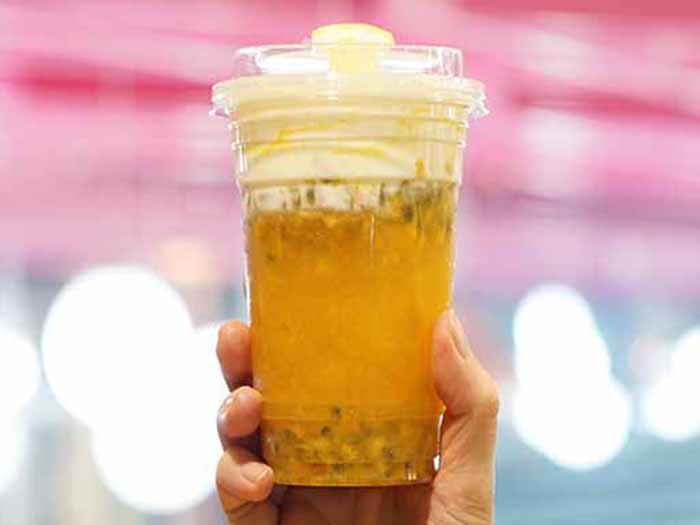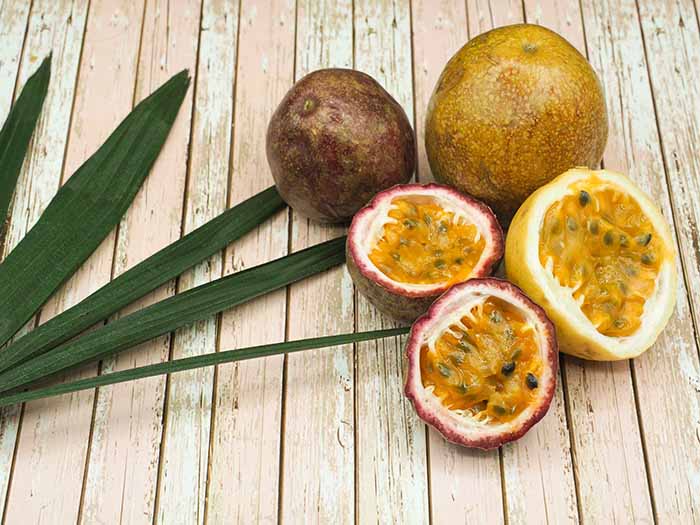|
Listen to this article

|
Drinkingpassion fruitteais a refreshing and delicious way to add some keynutrientsto your daily diet, particularly if you suffer from certain health conditions.
What is Passion Fruit Tea?
Passion fruit tea is anherbal teainfusionthat is typically made with ablack teabase and pieces of passionfruit or the essence of that fruit, along with otherspicesof berries. Scientifically known asPassiflora edulis, the passion fruit grows on a vine, and is packed withphytonutrients, vitamins, minerals, amino acids, andantioxidants. When this tea is brewed, it has a bright and floral flavor and is very popular in parts of North, South, and Central America, where this vine species can commonly be found. Depending on where you are in the world, you may be able to find passion fruit tea in pre-packaged bags, or you can simply make your own with the fruit.

Homemade iced passion fruit tea made with real fruit pulp. Photo Credit: Shutterstock
Passion Fruit Tea Benefits
The most important benefits of passion fruit tea include the following:
- Boostedimmunity
- Reduced inflammation
- Lowered stress hormones
- Loweredanxiety
- Improveddigestion
- Skincare
- Weight loss
With a high level ofvitamin A,vitamin C, and other antioxidants, this tea can lower the strain on the immune system and reduce the negative impact of free radicalsin the body.
Furthermore, drinking this tea has been linked to lowering inflammation and stress hormone levels, which can, in turn, lower anxiety and improvedigestivefunction.
Finally, some people seek out this tea for itsrejuvenatingeffects on the skin and complexion. The amino acids provided by this tea arealso valuable, as the building blocks of allproteinsin the body.
Since this tea is often made with acaffeinatedbase of black orgreen tea, there are also theenergizing effectsof this tea to consider, which can aid in weight loss efforts.
How to Make Passion Fruit Tea?
Making your own passion fruit tea is quite simple, regardless of how you choose to brew it. Let’s take a look at the recipe below.

Passion Fruit Tea Recipe
Ingredients
- 12-15passion fruits
- 2tsptea leaves
- 2tsplemon juice
- 2litreswater
Instructions
-
To make passion fruit tea, bring a pot of water to boil.

-
Add 2 tsp of tea leaves to the boiling water. Strain the tea and keep it aside.
-
Meanwhile, cut the passion fruits and remove the pulp. Take a soup strainer and press the pulp through it to get the juice.

-
Add it to the tea and stir to combine. Strain the tea and serve warm. You can have it cold by refrigerating it as well.

Connect With Us
If you have tried this recipe, we would love your feedback in the comments section below. And while we can’t taste it, we would love to see how it turned out! You can connect with us onFacebookorInstagramand tag your picture with #organicfactsrecipes.
Do you wish to share your winning recipes with us? Pleaseclick hereand fill in the details to get started.
Word of Caution:There are very few known side effects of this tea, but it is not recommended for pregnant or nursing women, due to some of the active chemical compounds in this fruit.




